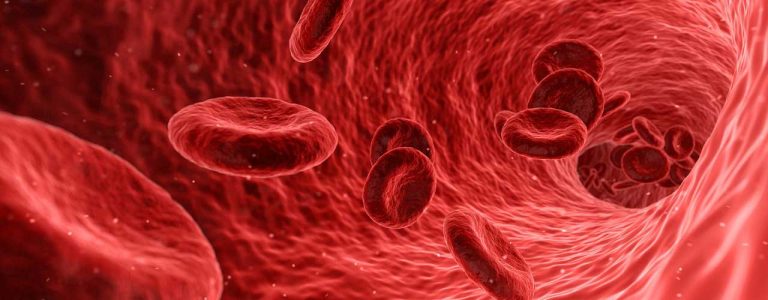Meth is a highly addictive and powerful stimulant drug. In its legal form, it is prescribed to help individuals with ADHD. As an illegal substance, meth is abused by people seeking its euphoric effects. If you have heard that meth is circulating in your area, you may wonder if your loved ones are using it. Meth abuse brings multiple health risks, and users may display visible signs of meth use.
You can help loved ones by understanding meth addiction. Learn the behavioral and physical signs that someone is abusing meth so that you can encourage loved ones to seek treatment. This article outlines the symptoms, signs, and effects of methamphetamine abuse to help you identify whether your loved one may have a problem with the drug.
What Is Methamphetamine?
Methamphetamine, also called meth, is classified as a schedule II drug by the US government. It holds this classification because it is a highly addictive drug that has some legitimate medical uses.
Figures from the National Institute on Drug Abuse show that in 2020 alone, more than 2.6 million people aged 12 and older had used methamphetamine in the previous 12 months. Furthermore, 1.5 million suffered from meth use disorder.
Research from the Substance Abuse and Mental Health Services Administration shows that every day, around 500 people try meth for the first time. It is safe to say meth is a commonly used drug in the United States and a major cause of substance abuse disorders.
Meth appears in several forms. It is often a powder. It is also sometimes used as a liquid. A rock-like form of meth is called crystal meth. Crystal meth is commonly used as a “club drug” at raves and nightclubs and is often called glass or ice. The rock type is the strongest form of methamphetamine and, therefore, the most addictive.
Meth Overdose
When users take illegal forms of meth, such as crystal meth, they often don’t know how much they are consuming. Legal drugs are produced in scientifically run laboratories where their potency is measured. With crystal meth or any other forms of illegal meth, it is more difficult for the user to know the strength of what they are taking.
To make matters worse, dealers often mix powdered drugs with other powders to increase the quantities that they can sell. A person buying meth from a dealer could find themselves taking a mixture of meth, household products, and other unknown drugs.
If you suspect that your loved one is using meth, it is important to know how to recognize the physical symptoms of an overdose. When you see the meth overdose warning signs, you should seek medical help immediately. Meth overdose warning signs are:
- High body temperature
- Chest pain
- Seizure
- Stomach pain
- High levels of anxiety or paranoia
- Irregular heartbeat
- Irregular breathing
- Passing out
Meth Addiction
Methamphetamine dependency and addiction alter how a person thinks and feels. A user may regard taking meth as an experiment at first, but when they develop dependency and addiction, it becomes a major life priority and can have a severe negative impact on their well-being.
- Drug dependency occurs when the body becomes used to the presence of the drug. When a person attempts to quit, they experience symptoms of withdrawal.
- Drug addiction is a mental illness that causes a person to lose control of their drug use and continue to take it despite all negative consequences.
The chronic use of meth is likely to lead to addiction. This happens because meth increases dopamine levels in the brain. Those who use meth will develop a tolerance very quickly and addiction soon after. Meth will dominate their life as they seek more and more to achieve its desired effects.
If prolonged, meth use makes it more difficult for individuals to produce dopamine on their own. Dopamine is a feel-good neurotransmitter, and healthy levels are essential for good mental health.
Risk Factors for Meth Addiction
Anyone can develop a drug addiction, but some factors make a person particularly vulnerable.
Genetics and environmental factors. Having a family member who suffers from substance abuse increases your chances of developing a drug use disorder too. In part, this is because you and the family member may share genes that predispose you both to addiction. Your family member’s involvement with drugs may also encourage you to believe that drug abuse is a normal recreational activity.
Mental illnesses. Having a pre-existing mental illness may lead you to self-medicate with substances to deal with symptoms and feelings. There is a well-established link between substance use and mental illness.
Trauma. If you have been through a traumatic experience, you are at risk of engaging in substance abuse to help you cope with any mental health condition that may have arisen as a result.
Signs of Meth Use
Someone who is abusing meth will show signs of it in the way they behave. Common behavioral signs of meth use include sudden, sporadic bursts of hyperactivity and rapid speech. They could also seem paranoid or aggressive.
Someone with a meth use disorder may also drop out of their usual activities. You may notice chronic absences from school and from gatherings with family members or friends.
Signs of Methamphetamine Addiction in Behavior and Relationships
- Mood swings
- Being easily irritated
- Extreme agitation
- Poor interpersonal relationships
- Difficulties holding down a job
- Loss of interest in hobbies and career goals
- Financial strain
Methamphetamine Addiction and Health
Methamphetamine abuse deeply affects both a user’s brain and body. The long-term effects of meth abuse can be life-shattering, sometimes even fatal. The most common symptoms of meth addiction are described further below.
Some individuals go to the extreme of cooking meth themselves in a made-up meth lab, sometimes at their place. Unfortunately, this can be detrimental to their health, as they can suffer from adverse health effects, including asthma, insomnia, tremors, and delusions. This is in addition to the other health issues caused by the addiction itself.
Physical Effects of Meth Addiction
- Facial acne and low facial skin quality, including premature aging of the skin
- Malnutrition
- Severe weight loss and frail body
- Decreased appetite
- High blood pressure
- Dilated pupils
- Extreme sweating
- High blood pressure
- Bad breath and blackened teeth (meth mouth)
- Rotting teeth from smoking meth (meth mouth)
- Lip and finger burns
- Itchy skin
- Rapid eye movements
- Sores, abscesses, and infection
- Lowered immunity
- Permanent damage to the immune system
- Nosebleeds and damage to nasal passages
- Infections from sharing needles and sexually transmitted diseases due to risk-taking behavior.
Mental Health Disorders Caused by Methamphetamine Addiction
- Psychosis
- Depression and anxiety
- Prolonged manic episodes
- Anhedonia (an inability to feel pleasure)
- Methamphetamine addiction can also cause memory loss, confusion, and deficits in thinking and motor skills.
Meth Withdrawal Symptoms
When individuals who abuse meth suddenly stop using it, it puts them at risk of experiencing a number of distressing symptoms of methamphetamine withdrawal.
- Sleep difficulties
- Low mood and depression
- Intense cravings for the drug
- Anxiety
- Dehydration
- Fatigue and intense tiredness
- Loss of pleasure
- Confusion
These symptoms can start around 24 hours after the last meth use. If you or your loved one intends to detox from meth, it is recommended that you do so under medical supervision.
Meth Addiction Treatment Options
Treatment for meth addiction usually begins with a meth detoxunder medical supervision. This isto clean the meth from the system and safely manage the withdrawal symptoms. The next stage of treatment is rehab. This is when the person can learn about the causes of their addiction and develop ways to resist taking drugs in the future.
Addiction treatment centers often offer inpatient and outpatient treatment.Staying at a facility for treatment can be the best route for individuals with severe addictions and is usually recommended for meth addiction. If a person receives outpatient care, they will reside at their own place and attend the treatment center during the day.
Talk therapy plays an important part in recovery from addiction. This can take place between the person and therapist alone. The person may also attend group therapy alongside other people in recovery.
Couples therapy and family therapy give the person’s loved ones the opportunity to join them at the treatment center. They can learn more about addiction and mental health under the guidance of a trained therapist.
Cornerstone Treatment Center
Cornerstone is a nationally accredited addiction treatment center in Southern California. We offer cutting-edge treatments to help people to recover from dependency and addiction.
Our specialist program for meth addiction can help you or your loved one to move forward from methamphetamine abuse. We are here to assist you every step of the way. Cornerstone’s services to help you say goodbye to substance addiction include:
- Family and couples therapy
- One-to-one and group therapy
- Inpatient, outpatient, and partial hospitalization programs
- Extended care to help you return to normal life
- Relapse prevention therapy
- Alumni program where you can have fun and meet others on the same recovery journey
At Cornerstone, everyone is welcome. We can assist you and provide a treatment that suits your needs. If you are addicted to several substances or have a co-occurring mental illness, we can help you.
If you or a loved one is struggling because of meth, get in contact today. We can help you start your journey to recovery.









